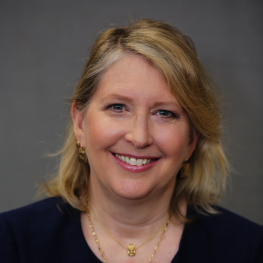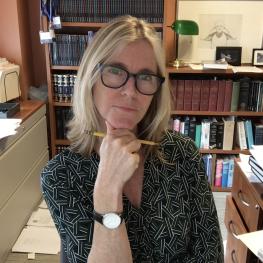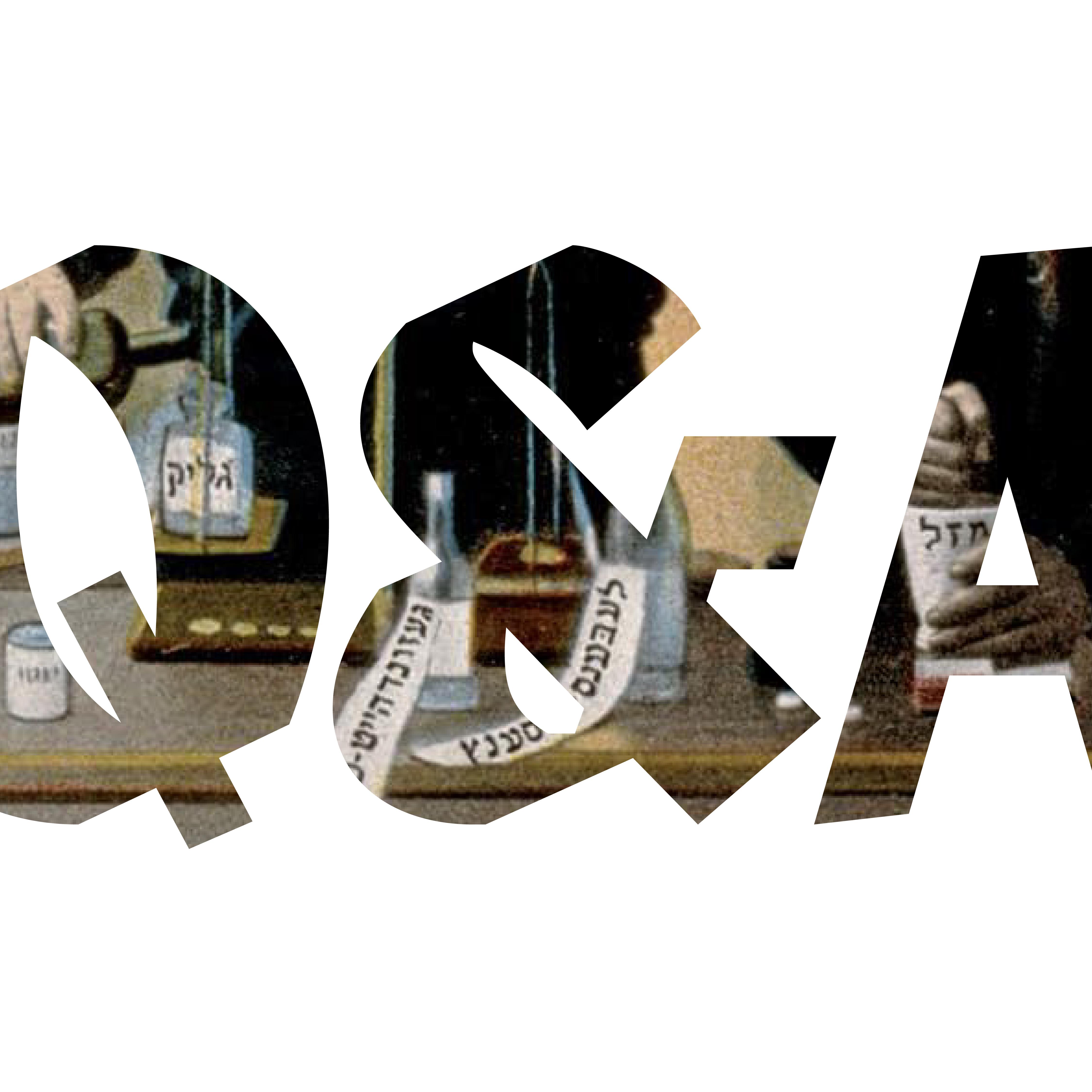Q&A: Katz Center Fellow Wendy Zierler Finds Where Storytelling, Medicine, and Gender Come Together in Modern Hebrew Literature
Q&A: Katz Center fellow Wendy Zierler is a polymath whose hard-to-pin-down scholarly identity brings creative verve to her scholarship

Detail of David Tartakover's wall installation in the Susan Dellal Center Square next to his home in the Neve Tzedek neighborhood of Tel Aviv, the installation dates from 1989.
Natalie Dohrmann (NBD): Wendy, tell us a bit about your broad scholarly interests, what drew you to them, and what especially excites you about them personally and/or intellectually.
Wendy Zierler (WZ): My scholarly interests are somewhat eclectic, born out of a combination of feminist conviction, pedagogical happenstance, and contemporary urgency. My first book, And Rachel Stole the Idols: The Emergence of Modern Hebrew Women’s Writing (2004)—and much of my work ever since—deals with the first Hebrew women prose writers and poets, and what happens when women finally enter into a Hebrew literary tradition where they had been almost entirely absent for centuries. While writing that first book, I was teaching in the English and American Studies Program at the University of Hong Kong, which meant I was also doing a lot of interdisciplinary reading about literature and film. As a result, one of the first courses I ended up teaching at HUC–NY was “Reel Theology,” which used film and popular culture as a springboard for Jewish theological and text study, and which led to the writing and publication of Movies and Midrash: Popular Film and Jewish Religious Conversation (2017). The “truth decay” that began to inflame our culture and discourse with the first Trump presidency led me to co-organize a conference on truth in Judaism, which resulted in the edited volume, These Truths We Hold: Judaism in an Age of Truthiness (2023). My forthcoming book, Going Out with Knots: My Two Kaddish Years with Hebrew Poetry (JPS), born out of the loss of both of my parents in one year, is a Kaddish memoir that combines personal reflection and feminist religious critique with the translation and analysis of poems by seven modern Hebrew poets. What excites me about all of these projects is the way they combine analysis of modern and contemporary Jewish literature with classical text study.
NBD: Your current project traces illness and disability in the work of some giants of modern Hebrew literature: Devorah Baron and S. Y. Agnon. Tell us how this project emerged and why you think illness/disability was such a resonant theme for them.
WZ: When I was working on my first book on the first modern Hebrew women writers, I stumbled upon a passage in one of Agnon’s early stories (“Agadat Hasofer” – Tale of the Scribe), in which a visitor to the home of Raphael Hasofer (the word sofer doubles for ritual scribe and modern writer), reports on the newfangled phenomenon of nashim kotvot (women who write). It struck me back then that Agnon was attesting to the entry of women—finally!—to the world of Hebrew belle-lettres, and to his friendship and literary/editorial collaboration with one of these first Hebrew women writers, namely Devorah Baron. It also struck me that this passage was pointing to certain contrasts in their respective approaches to longstanding Jewish literary themes. My first book included a consideration of their different approaches to the theme of barrenness/infertility. I then began by identifying other pairs of stories by Agnon and Baron that deal with the same themes, and tracing instances where they seemed to be responding to or revising each other’s approaches. I was delighted to discover that while in some cases, Baron was offering a feminist rejoinder to Agnon, in other cases, Agnon followed Baron’s lead and learned from her example. Recent reading in the field of narrative medicine has prodded me to consider not just how these two writers critique one another, but also how they listen and learn from one another, almost therapeutically.
NBD: I think you are the sole literary scholar around our table this semester. Can you talk a little bit about disciplinary divides in the collective conversation? Does a fellowship like this challenge, frustrate, or enhance your own approach to your material?
WZ: When I first arrived at the Center and met the historians and sociologists of medicine in the cohort, I felt a bit out of place. How, I wondered, was I going to contribute to a discussion of their work, and how were they going to respond to my close readings of Agnon and Baron? What I quickly found, however, was that they were open to my literary interventions. More than that, I found that their historical orientation helped me add important context and detail to my exploration of Agnon and Baron’s fiction.
NBD: Your intellectual identity is rather hard to pin down—scholar, artist, teacher and rabbi, activist, memoirist. Do you find these many facets reflected in your strictly academic work? If so, can you give an example?
WZ: Thanks for asking this question and allowing me to embrace rather than hide these facets of my identity, even in the “strictly academic” context of the Katz Center. Yes, I do find all of this reflected in my scholarship. My new book, Going Out with Knots began as an academic exploration of the nexus of poetry and liturgy. It was only after teaching a course on poetry and prayer and giving a few academic papers on the subject of modern Hebrew poetry, prayer, and translation, that I ended up writing this book that combines all three together with personal memoiristic reflection on loss, and also includes some of my own original artwork and poetry, too. I would say that my identity as a rabbi was also evident in the paper I presented for the Katz Center “Representations of Disability in the Fiction of Agnon and Baron.” The methodological frame of the paper drew from a passage in the Babylonian Talmud (bEruvin 13b), with its famous declaration that the teachings of the House of Hillel and Shammai were equally the living word of God, as well as from the field of narrative medicine, which is the closest that literary criticism comes to a kind of pastoral listening-oriented approach.
NBD: You work in a very Jewish space now, but began your career in Hong Kong, a decidedly less Jewish space. Do you think you see differently as a pedagogue and literary critic because of this experience? Can you say more?
WZ: I spent close to six years in Hong Kong, where I taught local Chinese students and experienced what it means to be an expatriate, living very far from my own “native” culture. Teaching students who came from a vastly different culture and had little-to-no baked-in conceptions of Judaism meant that I could never rely on them to share my assumptions or know what I meant; I needed to explain myself clearly and comprehensively, and draw meaningful connections between Chinese, Jewish, and American culture. That experience of linking seemingly disparate cultures and fields continues to influence my teaching and writing: my interest in poetry and metaphor, in movies and theology, as well as my current writing on literature and medicine. Pedagogically speaking, my students at HKU were often extremely diffident and loath to speak up; I worked very hard to come up with exercises and prods to get them to interpret on their own and offer their opinions in class. Having to prepare hard and be very intentional about teaching was good early training and continues to influence the way I prepare for class and collegial interactions to this day.




